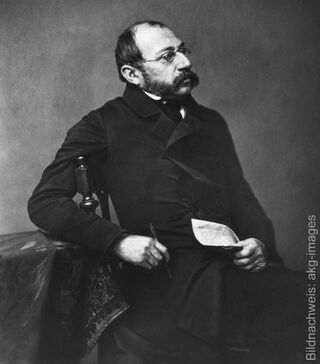Picture "The Poor Poet" (1839), framed


Picture "The Poor Poet" (1839), framed
Quick info
limited, 499 copies | numbered | certificate | reproduction, Giclée print on canvas | on stretcher frame | framed | size 57 x 69 cm (h/w)
Detailed description
Picture "The Poor Poet" (1839), framed
Symbol of the German poet and thinker: "The Poor Poet". No other work of art by Spitzweg enjoys such great popularity to this day. A survey showed that "The Poor Poet" - right after Leonardo da Vinci's "Mona Lisa" - is one of the most popular pictures among Germans.
The picture of the poet concentrating only on the spiritual is prototypically staged here by Spitzweg: Equipped against the cold with a blanket, a scuffed jacket and a sleeping cap and protected with an umbrella against penetrating rainwater, he devotes himself undeterred to his work.
Original: Neue Pinakothek, Munich.
Brilliant Reproduced using the Fine Art Giclée process directly on artist's canvas, mounted on a stretcher frame. Limited edition of 499 copies, numbered on the back and with certificate. Framed in a fine handmade solid wood studio frame in antique platinum with reddish brown. Size 57 x 69 cm (h/w).
Frame configurator
Customised picture frame

Frame configurator
Customised picture frame






Customer reviews
Frame variant: framed
Ein sehr schöner Druck.Habe viel Freude daran.Sehr zu empfehlen!!!!!!!!!
Frame variant: framed
Das Bild entspricht genau meinen Erwartungen. Ich bin vollauf zufrieden.

About Carl Spitzweg
1808-1885 - German painter and draughtsman
Carl Spitzweg was one of the most important artists of the Biedermeier period. He created numerous paintings, oil studies, drawings and watercolours whose peculiar, a whimsical charm made him the most popular representative of the bourgeois genre and landscape painting in southern Germany.
Spitzweg came from a wealthy Munich merchant family and initially completed a degree in natural sciences. An illness led him to the decision to become a painter. He continued to train himself and soon found connections with other colleagues of the Munich school of painting, such as Moritz von Schwind.
Spitzweg is one of the great German painters and draughtsmen of the 19th century. His best-known pictures, such as "The Poor Poet", the "Bookworm" or the "Eternal Wedding Man", show eccentrics of bourgeois society indulging in their respective hobbies.
Carl Spitzweg's imagination and outstanding painting technique were combined with perhaps the most important ingredient: his sense of humour. With wit and affectionate exaggeration, the inveterate bachelor created character studies of quirky eccentrics and romantic encounters - always told lovingly and with a twinkle in his eye. This is how he became one of the most popular German artists. He chose very small formats and portrayed the figures precisely and in detail in their respective milieu. In this way, he achieved a satirical overdrawing of the types that reached into the grotesque. In his later works, he placed more emphasis on the spontaneous, sketchy and moving, which is particularly evident in his landscape depictions.
He was not discovered by art history until around 1900, and throughout his life, he was never as famous as other contemporary painters.
Art and culture set between Romanticism and Realism in the German-speaking countries in the period from 1815 to approx. 1860. The epoch took its name from the magazine "Fliegende Blätter", where the poems by Swabian schoolteacher Gottlieb Biedermaier were regularly published between 1855 and 1857.
Painting of this period was dominated by intimate, comfortable motifs. Masters of the Biedermeier period include Carl Spitzweg, J. P. Hasenclever, G. F. Kersting. Ludwig Richter distinguished himself as an excellent illustrator.
After the German Centennial Exhibition 1906 in Berlin, the term "Biedermeier" established to describe fashion and furniture of simple, unadorned but high-quality craftsmanship.
Depiction of typical scenes from daily life in painting, whereby a distinction can be made between peasant, bourgeois and courtly genres.
The genre reached its peak and immense popularity in Dutch paintings of the 17th century. In the 18th century, especially in France, the courtly-galant painting became prominent while in Germany the bourgeois character was emphasised.
Giclée = derived from the French verb gicler "to squirt, spurt".
The giclée method is a digital printing process. It is a high-resolution, large-format printout on an inkjet printer with special different-coloured dye- or pigment-based inks (usually six to twelve). The colours are fade-proof, i.e. resistant to harmful UV light. They have a high richness of nuance, contrast and saturation.
The giclée process is suitable for art canvases, handmade and watercolour paper as well as for silk.






